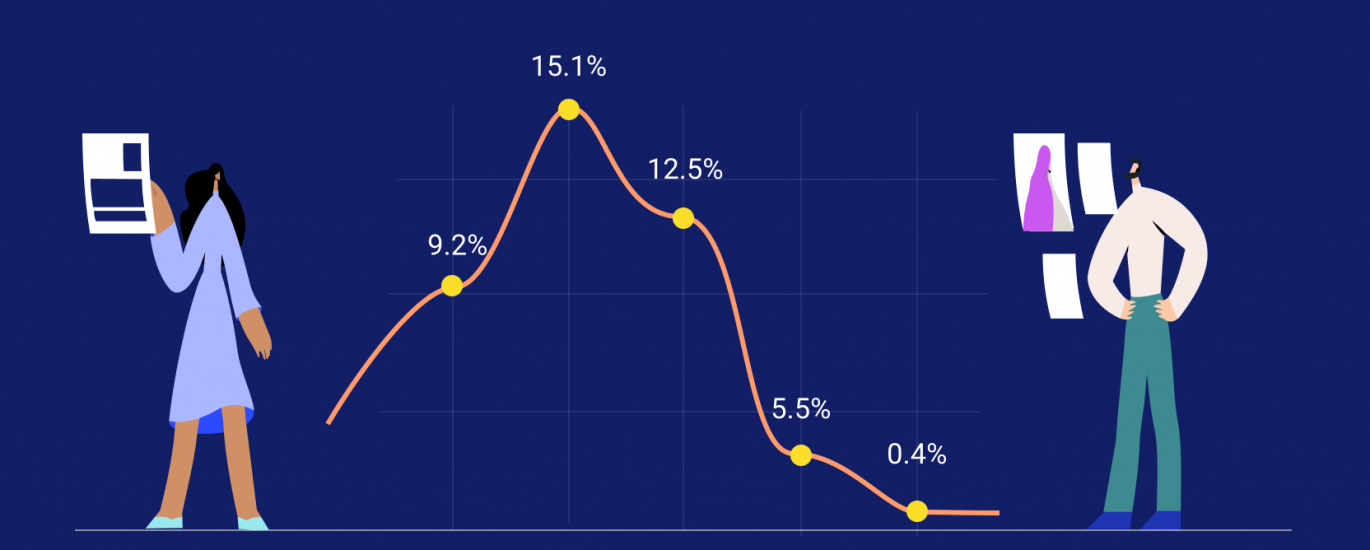
For the first time since we started analyzing the gender pay gap at Buffer, our unadjusted gender pay gap is below one percent. Although this number will certainly fluctuate with team changes, we’re proud and happy to see this progress. ❤️
As a reminder, unadjusted means that we are comparing all salaries across Buffer. Adjusted is comparing two people in the same role, we don’t have an adjusted pay gap as we use a salary formula to determine compensation.
Here’s a closer look at our pay analysis from 2022 and some of the elements from this past year we believe impacted this number.
Buffer’s 2022 Pay Analysis
Our team size has stayed roughly the same over the last 12 months, we have 83 Buffer teammates. Of those, 37 identify as women, and 46 identify as men.
The average salary for women is $136,850 and the average salary for men is $137,418, making our unadjusted pay gap percentage 0.41%.
Buffer team: 83 people
Women: 37
Men: 46
Average salary for women: $136,850
Average salary for men: $137,418
Unadjusted percentage gap: 0.41%
*Note: We can’t share data from the folks on our team who don’t identify as men or women as it is not a representative sample so we’ve opted to leave it out of this report but that may change for future reports depending on how we collect data internally.
Since 2018, this what our unadjusted gender pay gap percentage has looked like:

In 2019, our gap got worse before it got better. As we’ve reflected on this over the years, we believe this is because being a smaller company, each departure, and new hire moves the number and in 2019 we hired more women who were in lower experience levels. As a result, we widened our gender pay gap, though we improved our overall gender ratio as a company and we believe this paid off in the long-term.
Here’s a look at the gender split on the Buffer team over the last five years:

We also see a lot of fluctuation in between these pay analyses also due to new hires and departures.
You can see over the last 12 months that every month has been quite different:

Closing the unadjusted gender pay gap at Buffer is something we’ve been working on for years and is cause for celebration. Initially, this didn’t feel like a goal we could attain given that our co-founder and CEO, Joel, is our highest-paid employee and also a man. There are a lot of factors that have made this possible, though. We’ve talked about diversifying our hiring pipeline and creating a career framework in the past. Here are a few changes that happened over the last year that we believe would have also had an impact.
What changed in the last year?
Buffer is made up of different teammates
Hiring and departures are consistently huge factors that impact our unadjusted gender wage gap every year.
Hiring: From March 1st, 2021 we hired 24 new teammates, 11 women, and 13 men.
Departures: From March 1st, 2021, we had 25 departures, 15 women, and 10 men.
In our analysis, we found that 52 percent of departures were above the average pay across the company while 33 percent of new hires were hired above the average pay across the company.
Our executive team is 80% women
As we calculate the unadjusted gender wage gap by comparing all salaries across all teams at Buffer, our executive team naturally plays a large role here as they are some of the highest paid teammates at Buffer.
Over the last few years, our executive team’s ratio of men and women has always skewed slightly towards more women on the team. In the last year, our executive team has shifted to be comprised of all women except for our CEO, Joel.
We adjusted our cost of livings bands
We use a salary formula to determine every salary at Buffer and in April 2020 we made a big change to that formula — we went from four cost of living bands down to just two. As Joel writes in his blog post on the vision for location-independent salaries, “the change we made resulted in salary increases for 55 of 85 team members, with the increase being on average $10,265.”
That’s a huge number of Buffer teammates and a large percentage of the team who was impacted. These changes were entirely based on location, every teammate in our two lowest cost of living bands was brought up to our new Global cost of living band while those in our High cost of living band remained the same. In total, 46 percent of those whose salaries was increased were women and 54 percent were men, however we did have more women in the Low cost of living band, meaning that their salary increased more on average due to this change than men.
There could have been other shifts that we missed that also impacted this number, but these are three big themes. Naturally, each new hire and departure will continue to impact this number over time, so this is something we’ll continue to track and report on.
We publish this pay analysis every year as we believe this is the best way to help move our industry towards positive change. We hope that as we continue to share this journey it can be beneficial to others who are working towards similar goals. ❤️
View all of our past pay analyses here: 2021, 2020, 2019, 2018, 2017
Reach out with your thoughts on equal pay or this pay analysis anytime!





